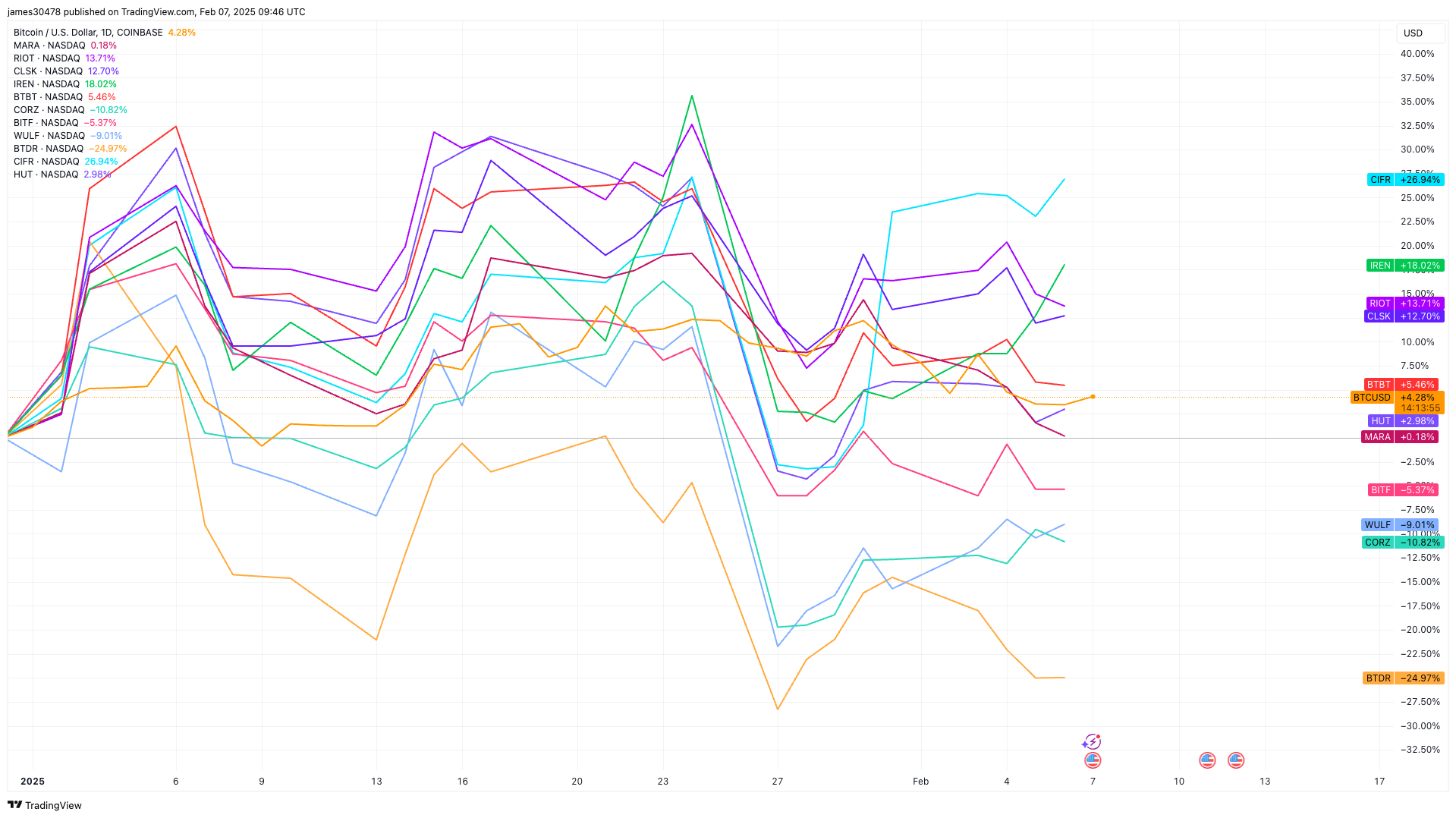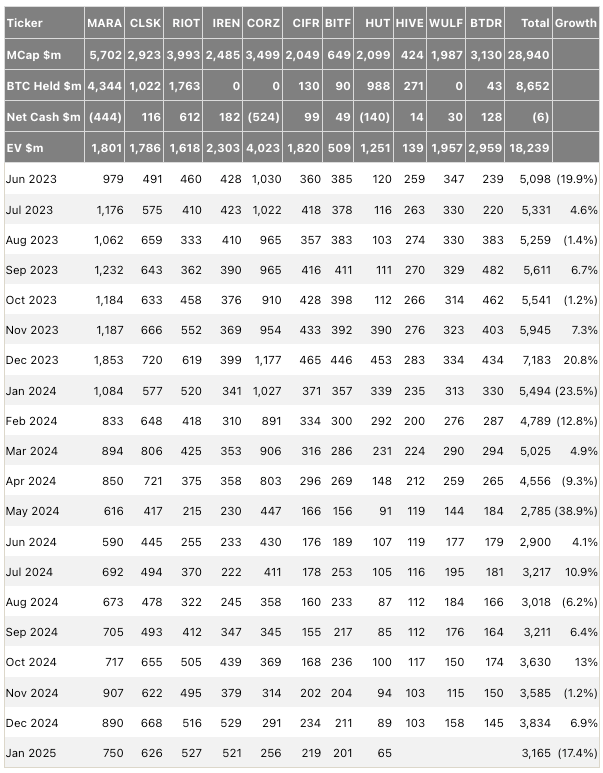Uncategorized
Riot Platforms Bucks Trend of Weak Bitcoin Production in January

Riot Platforms (RIOT) mined 527 Bitcoin (BTC) in January, marking its highest monthly production since December 2023 and reflecting a 2% increase from the previous month, according to Farside data.
However, the broader bitcoin mining sector reported underwhelming production figures, with most major mining firms experiencing month-over-month declines.
MARA Holdings (MARA) mined 750 BTC in January, representing a 13% decline from December. Similarly, Cleanspark (CLSK) saw a 6% decrease, mining 626 BTC. Other mining firms also reported negative month-over-month production figures:
IREN (IREN): 2% decline
Core Scientific (CORZ): 13% decline
Cipher Mining (CIFR): 7% decline
Bitfarms (BITF): 5% decline
Hut 8 (HUT): 31% decline

The widespread decline in bitcoin production can be attributed to the increasing network difficulty, which both Riot and MARA’s CEOs cited as a key challenge.
«In January, our production saw a 12% month-over-month decline in blocks won, largely due to fluctuations in network difficulty and intermittent curtailment,» said Fred Thiel, MARA’s chairman and CEO.
«Riot mined 527 Bitcoin in January, marking the second consecutive month of increased production despite rising network difficulty,” said Jason Les, CEO of Riot.
Bitcoin’s mining difficulty adjusts every 2,016 blocks to maintain an average block time of 10 minutes. The next difficulty adjustment, set for Feb. 9, is projected to hit an all-time high, surpassing the previous record of 108.11 trillion (T).
Mining Stocks Performance Year-to-Date
Bitcoin has risen 4% YTD, serving as a benchmark for mining stocks. Among miners:
Cipher Mining (CIFR) is the standout performer, up 27%
IREN, RIOT, and CLSK have all posted double-digit gains
Bitdeer Technologies (BTDR) is down 25%
Core Scientific (CORZ) and TerraWulf (WULF) are both down approximately 10%.
Hive (HIVE), BTDR and WULF have yet to report January production figures.
Uncategorized
Elon Musk vs. the regulators
Welcome back to TechCrunch Mobility, your hub for all things “future of transportation.”
Uncategorized
Nvidia’s AI empire: A look at its top startup investments
Over the last two years, Nvidia has used its ballooning fortunes to invest in over 100 AI startups. Here are the giant semiconductor’s largest investments.
Uncategorized
Dating app Cerca will show how Gen Z really dates at TechCrunch Disrupt 2025
Cerca is a dating app that sets users up with mutual friends.
-

 Business12 месяцев ago
Business12 месяцев ago3 Ways to make your business presentation more relatable
-

 Fashion12 месяцев ago
Fashion12 месяцев agoAccording to Dior Couture, this taboo fashion accessory is back
-

 Entertainment12 месяцев ago
Entertainment12 месяцев ago10 Artists who retired from music and made a comeback
-

 Entertainment12 месяцев ago
Entertainment12 месяцев ago\’Better Call Saul\’ has been renewed for a fourth season
-

 Entertainment12 месяцев ago
Entertainment12 месяцев agoNew Season 8 Walking Dead trailer flashes forward in time
-

 Business12 месяцев ago
Business12 месяцев ago15 Habits that could be hurting your business relationships
-

 Entertainment12 месяцев ago
Entertainment12 месяцев agoMeet Superman\’s grandfather in new trailer for Krypton
-

 Uncategorized4 месяца ago
Uncategorized4 месяца agoRobinhood Launches Micro Bitcoin, Solana and XRP Futures Contracts


